Imagine a dog that combines the warm-hearted loyalty of a Labrador Retriever with the free-spirited resilience of a Siberian Husky. Meet the Husky Lab Mix, affectionately known as the Labsky or Huskador. This breed isn’t just another pet; it’s a melting pot of some of the best qualities you can find in canine companions.
Each Labsky I encounter is a revelation in itself, showcasing a remarkable blend of traits that makes them stand out in the canine world. Their personalities are as varied as their coat patterns, each one a delightful surprise.
I’m thrilled to bring you into the world of the Husky Lab Mix. Prepare to be charmed by these dogs, each with a personality as unique as a fingerprint. They’re not just pets. They’re like friends who can turn any ordinary day into something special.
TABLE OF CONTENTS
- Husky Lab Mix Breed Summary
- Origin and History of the Husky Lab
- Physical Characteristics of the Labrador Husky
- Personality and Temperament of the Husky Labrador
- Husky Lab Mix Care
- The Most Common Health Concerns in Husky Labradors
- How to Train a Huskador
- The Cost of Owning a Husky Labrador
- Frequently Asked Questions About the Husky Lab Mix
- So, Is the Husky Lab Mix Right For You?
- More Siberian Husky and Labrador Mixes
Husky Lab Mix Breed Summary
| Common Names | Labsky, Huskador, Labrador Husky, Siberian Retriever |
| Parent Breeds | Labrador Retriever and Siberian Husky |
| Breed Group | Hybrid |
| Size | Large |
| Height | 20–28 inches |
| Weight | 60–100 pounds |
| Colors | Gray, white, black, chocolate |
| Coat | Thick and lush |
| Life Expectancy | 11–13 years |
| Temperament | Loving, playful, energetic, intelligent, vocal |
| Shedding | Heavy shedding |
| Barking Tendency | Vocal, may bark and howl |
| Cost | $400–$2,000 |
Origin and History of the Husky Lab
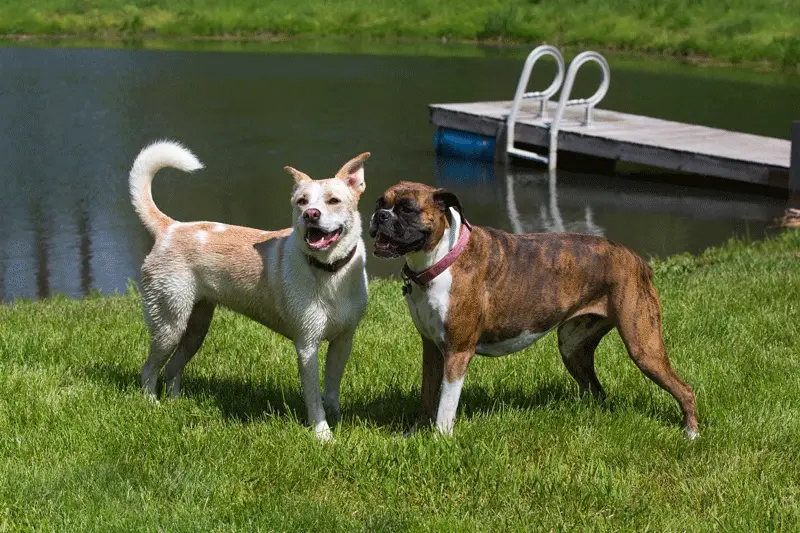
The Husky Lab, also known as the Labsky, is a fascinating breed whose origin and history blend the stories of two well-known and beloved breeds: the Siberian Husky and the Labrador Retriever. Tracing the roots of this mixed breed offers insights into the unique qualities that define the Labsky.
Historical Background of the Parent Breeds
The Siberian Husky is a working dog breed. Hailing from Northeast Asia, it was originally bred by the Chukchi people for sled pulling and companionship in harsh Arctic conditions. The breed was renowned for its endurance, strength, and resilience in cold climates.
On the other hand, the Labrador Retriever is a part of the sporting group. It originated in Newfoundland, Canada, and was initially used by fishermen to help retrieve fishing nets and escaped fish. Known for their friendly disposition, intelligence, and strong swimming ability, Labradors soon became popular as hunting and service dogs.
Development of the Husky Lab Mix
The Husky Lab mix likely originated in the late 20th century, as breeders and dog enthusiasts began experimenting with crossbreeding different purebred dogs to combine their desirable traits. The Labsky emerged as a result of these efforts, aiming to blend the Husky’s resilience and striking appearance with the Labrador’s friendly nature and trainability.
The Labsky in Modern Times
In modern times, this crossbreed dog has gained popularity as a family pet and companion dog. While not recognized as a distinct breed by major kennel clubs, the Labsky has garnered a dedicated following thanks to its unique combination of physical and temperamental traits from its parent breeds. Their intelligence, loyalty, and adaptability make them suitable for a variety of roles, including companionship, service, and even agility sports.
Cultural and Societal Impact
The rise of the Labsky reflects a growing interest in mixed-breed dogs and the value they bring to the canine community. These dogs often embody the best of both worlds, offering unique blends of traits that appeal to a wide range of dog lovers. The popularity of the Labsky also underscores a broader trend in pet ownership, where the focus is increasingly on the individual dog’s personality and suitability for a particular lifestyle, rather than purebred status.
Physical Characteristics of the Labrador Husky
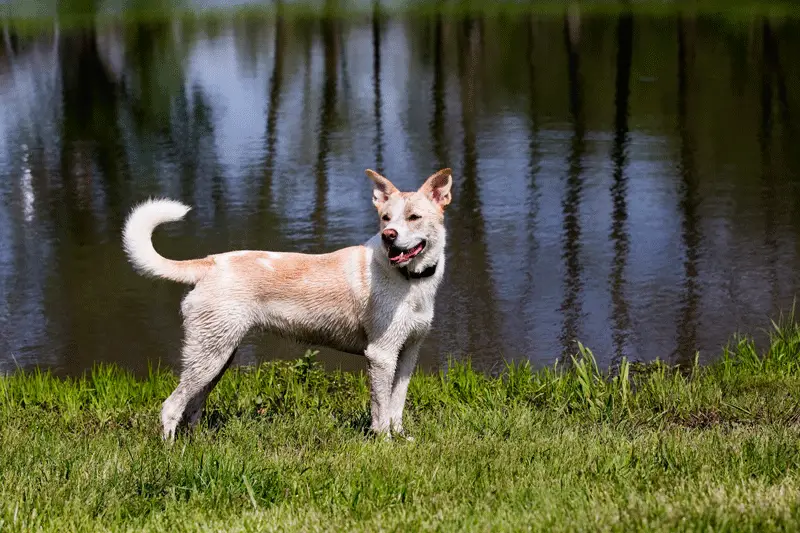
I can’t help but be mesmerized when I first saw a Labrador Husky. It has a robust frame combined with an unmistakable air of grace and power. Their build is muscular yet graceful, a testament to their capabilities for endurance and strength.
Size and Build
Standing at 20 to 28 inches at the shoulder, they exhibit a confident posture that commands respect. The weight range, spanning from 60 to 100 pounds, further accentuates their tough stance. Males typically present a more formidable figure, with a bulkier build and more pronounced muscle definition compared to females.
Coat and Color
One aspect of the Labsky that never fails to amaze me is their coat. It’s thick and lush, perfect for colder climates. The variety in their coat colors is remarkable – from shades of gray and white that hint at a wintry landscape to the rich blacks, chocolates, or even the occasional yellow. It’s like watching a canvas of nature’s best colors on a single breed.
Facial Features
The facial expression of a Labrador Husky Mix is something to behold. Their eyes are particularly expressive; whether they’re a deep brown or a striking blue, they seem to reflect a world of emotions. The ears stand alert and the snout is broad, giving them a look of keen intelligence and curiosity.
Tail and Paws
Their tail is another feature that always catches my eye. Typically bushy, curling over their back, it’s like a flag of pride they carry everywhere. And then there are their paws – large, sturdy, and padded as if designed for adventurous treks through diverse terrains.
Origin & Purpose
In the 1990s, designer breeders started crossing Labrador retrievers and Siberian huskies to create a family-friendly working dog with fewer inherited health problems than its parent breeds. However, husky lab mixes likely existed naturally before this time.
Personality and Temperament of the Husky Labrador
Engaging with a Labsky is always an adventure. They possess a delightful mix of traits that can surprise even the most seasoned dog enthusiasts. From their heartwarming affection to their boundless energy, these dogs are a constant source of joy and entertainment.
Affectionate and Loyal
These dogs form strong bonds with their families, often becoming an integral part of the household. They thrive on human interaction and love being involved in family activities. Whether it’s a lazy Sunday afternoon or a bustling family gathering, the Labsky is often right in the midst of it, seeking attention and offering unconditional love.
Their loyalty isn’t just about being physically close. It’s also about the emotional connection they build with their owners. I’ve noticed how tuned in they are to the moods and feelings of those around them, often acting as a comforting presence during tough times. This emotional intelligence, combined with their loving nature, makes them exceptional companions.
Energetic and Playful
The Husky Labrador is a bundle of energy and playfulness. These dogs inherit the high energy levels of both parent breeds, making them ideal pets for active individuals or families. They love to run, play, and engage in activities that challenge them both physically and mentally. Their enthusiasm for life is truly infectious.
However, this high energy also means they require ample exercise to stay happy and healthy. Without regular physical and mental stimulation, they can become restless or develop behavioral issues. This is one thing I will further discuss later.
Intelligent and Trainable
Intelligence is a hallmark of the Husky Labrador mix. They are quick learners and respond well to training, inheriting the keen intelligence of the Labrador and the problem-solving abilities of the Husky. This makes them not just fun to train but also capable of learning a wide range of commands and tricks. I’ve always been amazed at how swiftly Labskies pick up new skills, making training sessions both rewarding and enjoyable.
Their trainability goes hand in hand with their desire to please. Labskies often excel in obedience training and can be great candidates for more advanced training like agility or service work. However, their intelligence means they need consistent and engaging training to keep them mentally stimulated.
Vocal Tendencies
When it comes to vocalization, the Husky Labrador mix can be quite expressive. They tend to inherit the Husky’s inclination for vocalizing, which can range from howling to more subtle vocal sounds. This trait means they’re not shy about expressing their needs or alerting you to something unusual in their environment.
While their vocal nature can be charming, potential owners need to be prepared for a dog that might be more vocal than other breeds. Training and socialization can help manage excessive barking or howling, but understanding and embracing this aspect of their personality is key to a harmonious living arrangement.
Husky Lab Mix Care
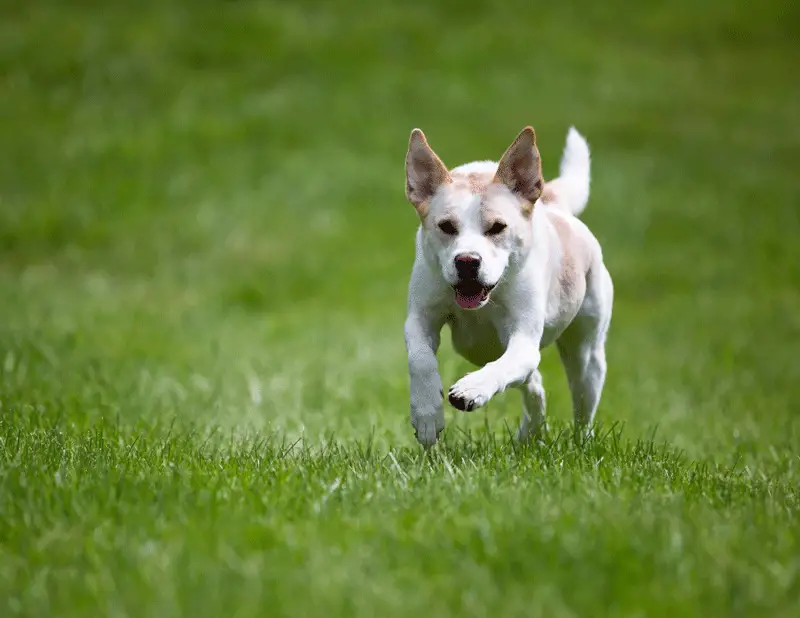
Caring for a Husky Lab Mix, or a Labsky, is an incredibly rewarding experience, but it does come with its own set of challenges and responsibilities.
Exercise and Activity
Labskies are a bundle of energy, and they need plenty of exercise to stay healthy and happy. I recommend at least an hour of physical activity every day, which can include walks, runs, or play sessions at the park.
It’s not just about keeping them physically fit; exercise also plays a crucial role in keeping them mentally stimulated. These dogs love to play fetch, tug-of-war, and other interactive games that challenge their minds and bodies.
A tired Labsky is a happy Labsky. Without enough exercise, they can become bored and potentially destructive. Labskies turn to chewing furniture or digging holes when they aren’t given enough opportunities to burn off their energy. Keeping them active is key to maintaining a harmonious household.
Diet and Nutrition
Feeding your Labsky a balanced and nutritious diet is vital. These dogs do well on high-quality dog food that’s appropriate for their age, size, and activity level. I always advise measuring their food and sticking to a feeding schedule to prevent overfeeding, as Labskies can be prone to weight gain, especially if they’re not getting enough exercise.
Treats can be a great training aid, but moderation is crucial. Too many treats can lead to weight issues, and with Labskies’ hearty appetites, it’s something to be mindful of. Also, ensure they have access to fresh water at all times, especially after exercise or on hot days.
Grooming Needs
They typically have a thick coat that requires regular brushing, at least a few times a week. This not only helps to reduce shedding but also keeps their coat healthy and looking its best. During shedding seasons, you might find yourself brushing them daily, but it’s a great way to connect with your pet and check for any skin issues or parasites.
Bathing should be done as needed, usually every few months, unless they get particularly dirty. Remember to trim their nails regularly and keep an eye on their ears and teeth for any signs of infection or dental issues.
Regular Veterinary Care
Regular check-ups with the vet are crucial for maintaining your Labsky’s health. They should be up to date with vaccinations, flea and tick prevention, and heartworm medication. It’s also important to discuss weight management and any breed-specific health concerns with your veterinarian.
I always emphasize the importance of preventive care. Catching health issues early can make a significant difference in treatment and outcomes. Plus, regular vet visits help your Labsky become comfortable with the experience, making it less stressful for both of you.
The Most Common Health Concerns in Husky Labradors
Caring for a Husky Lab means being aware of some common health concerns that can affect this breed. I’m a firm believer that prevention is better than care, so be proactive in managing health conditions. Otherwise, they can significantly impact quality of life.
Hip and Elbow Dysplasia
Hip and elbow dysplasia are common in larger breeds like the Labsky. This condition, where the hip or elbow joint doesn’t fit together perfectly, can lead to pain and mobility issues. Symptoms can include limping, difficulty rising, and reluctance to jump or run. It’s often a combination of genetic factors and rapid growth during puppyhood that leads to these joint problems.
- Maintain a healthy diet to prevent excessive weight, reducing stress on joints.
- Regular, low-impact exercise to strengthen the muscles around the joints.
- Routine vet check-ups to monitor joint health.
- Consider supplements like glucosamine and chondroitin, as recommended by your vet.
- In severe cases, surgery may be an option.
Obesity
Given their love for food and potential for overeating, obesity is a significant concern for Labskies. Excess weight can lead to a host of other health problems, such as diabetes, joint issues, and heart disease. Symptoms include noticeable weight gain, difficulty in exercise, and a lack of visible waistline.
- Regular exercise tailored to your dog’s needs and abilities.
- Controlled diet with measured meal portions.
- Avoid too many treats and human food.
- Regular weigh-ins and body condition assessments.
- Consultation with a vet to devise a weight-loss plan, if necessary.
Eye Problems
Labskies can inherit eye problems from both Huskies and Labradors. These can range from cataracts to progressive retinal atrophy. Symptoms to watch for include cloudiness in the eyes, clumsiness, or changes in eye color. Early detection is key to managing these conditions.
- Regular check-ups with a vet, including eye examinations.
- Watching for any signs of eye discomfort or changes in behavior.
- Keeping their living areas well-lit to help dogs with poor vision.
- Discussing with your vet about potential treatments or surgeries for specific eye conditions.
Skin Conditions
Skin conditions, such as allergies and hot spots, are relatively common in Labskies. These can be caused by environmental allergens, food sensitivities, or parasites. Symptoms include excessive scratching, red or inflamed skin, and hair loss.
- Regular grooming to keep the coat and skin clean.
- Flea and tick prevention treatments.
- Identifying and avoiding allergens, which may require a vet’s assistance.
- Using hypoallergenic shampoos or topical treatments as recommended by your vet.
- Monitoring diet to identify any food-related triggers.
How to Train a Huskador
As we explore the world of training a Huskador, you’ll find that the right approach and techniques can make a significant difference in nurturing a well-behaved and happy canine companion.
Establishing Leadership
One of the first steps in training a Lab Husky Mix is establishing yourself as the leader. This breed is known for its intelligence and sometimes stubborn streak, inherited from its Husky lineage. They respond well to an owner who is consistent, patient, and assertive.
- Start training early, as puppies are more malleable and open to learning.
- Use positive reinforcement techniques. Praise and treats can work wonders.
- Be consistent in your commands and expectations.
- Avoid harsh discipline as it can lead to fear and distrust.
- Practice patience. Some days will feel like a step back, but perseverance is key.
Socialization
They need to be exposed to different people, animals, and environments to become well-rounded adults. This breed can be overly enthusiastic at times, so early socialization helps them learn appropriate behaviors.
- Introduce your Huskador to a variety of people and settings from a young age.
- Enroll them in puppy classes or arrange playdates with other vaccinated dogs.
- Expose them to different sounds, sights, and experiences.
- Always monitor their reactions and comfort levels during new encounters.
- Remember, positive experiences during this phase are vital for their development.
Obedience Training
Obedience training with a Huskador isn’t just about teaching them to follow commands; it’s about fostering mutual respect and understanding. You’ll find that they respond best when training feels like a collaborative effort rather than a strict regimen. This means using positive reinforcement to encourage good behavior and setting clear, consistent boundaries to manage their occasional willfulness.
- Focus on basic commands like sit, stay, come, and heel.
- Keep training sessions short and engaging to maintain their interest.
- Use a firm, yet gentle tone. Huskadors are sensitive to their owner’s voice.
- Practice commands in different environments to reinforce learning.
- Consider advanced training or dog sports to keep them mentally stimulated.
Behavioral Training
Huskadors may exhibit certain behaviors like digging or chewing, especially if they’re bored or not getting enough exercise. Addressing these behaviors requires a combination of training, exercise, and mental stimulation.
- Identify the cause of the behavior. Boredom? Excess energy? Anxiety?
- Redirect undesirable behaviors to acceptable alternatives, like chew toys.
- Ensure they’re getting enough physical and mental exercise.
- Crate training can be beneficial, especially for puppies.
- Seek professional help if you’re struggling with behavioral issues.
The Cost of Owning a Husky Labrador
Owning a Lab Husky Mix involves both an initial investment and ongoing financial commitments. It’s important for prospective owners to understand these costs fully when considering the addition of a Husky Labrador to their home.
Initial Purchase Price
The initial cost of acquiring a Husky Labrador puppy can vary significantly, influenced by factors such as the breeder’s reputation, geographic location, and the specific lineage of the puppy.
As a designer dog, the price tag for a Husky Labrador might range from about $400 to as much as $2,000. This variation reflects the breed’s popularity and the costs associated with breeding two purebred dogs.
While a higher price can sometimes be indicative of a reputable breeder who conducts health screenings and provides good care, it’s crucial to research and choose a breeder who prioritizes the health and well-being of their puppies over making a profit.
Long-Term Costs
The long-term expenses of owning a Husky Labrador are a significant part of the commitment to your pet and include various aspects of their care.
- Food and Supplies: Quality dog food, toys, beds, leashes, and collars are part of the regular expenses. Monthly food costs can range from $40 to $80, depending on your dog’s size and dietary needs.
- Veterinary Care: Routine health care, such as vaccinations, flea and tick prevention, and regular check-ups, are essential. Factor in costs for spaying or neutering and potential unexpected health issues. An annual budget of $500 to $1000 for veterinary expenses is advisable.
- Grooming: Husky Labradors require regular grooming. Professional grooming can cost between $30 to $90 per session. Alternatively, investing in grooming tools for at-home care can help reduce these expenses.
- Training and Socialization: Investing in puppy classes or obedience training, which can cost several hundred dollars, is beneficial for your dog’s behavior and social skills.
- Pet Insurance: Considering pet insurance to cover unforeseen medical costs is wise. This can range from $30 to $50 per month.
Frequently Asked Questions About the Husky Lab Mix
Are Husky Lab Mixes good family pets?
Yes, Husky Lab Mixes can make excellent family pets. They are known for their friendly and affectionate nature, intelligence, and high energy levels. They do well in active households and are great with children, provided they are properly socialized and trained.
Do Husky Lab Mixes shed a lot?
Yes, Husky Lab Mixes are known to shed heavily, especially during the shedding seasons in spring and fall. Regular grooming, including brushing a few times a week, can help manage the shedding and keep their coat healthy.
Are Husky Lab Mixes easy to train?
Husky Lab Mixes are generally intelligent and can be easy to train, but they may inherit a stubborn streak from the Husky side. Consistent, positive reinforcement training methods work best for this breed. Early socialization and obedience training are also important.
Can Husky Lab Mixes live in apartments?
While Husky Lab Mixes can adapt to apartment living, they are better suited to homes with more space, like those with a yard. Their size and energy levels make them more comfortable in larger living spaces where they can move around freely.
How long do Husky Lab Mixes live?
The average lifespan of a Lab Husky Mix is around 11 to 13 years. Proper care, a healthy diet, regular exercise, and routine veterinary care can contribute to a longer, healthier life.
Are Husky Lab Mixes good with other pets?
Husky Lab Mixes can be good with other pets, especially if they are raised together or properly socialized from a young age. However, their high prey drive, inherited from the Husky side, might require careful introduction and supervision around smaller animals.
So, Is the Husky Lab Mix Right For You?
Deciding whether the Labsky is the right dog for you is a significant decision. This breed, with its unique blend of characteristics, can be the perfect companion for some, while it might be challenging for others.
Who the Husky Lab Mix is For
- Active Individuals and Families: If you lead an active lifestyle and enjoy spending time outdoors, a Labsky could be your ideal companion. Their high energy levels and love for play make them perfect partners for hiking, running, and outdoor adventures.
- Experienced Dog Owners: Those with prior experience in dog training and care may find the Labsky’s intelligence and energy levels more manageable. Understanding canine behavior and training nuances can be crucial in raising a well-behaved Labsky.
- People Seeking a Loyal Companion: Labskies are known for their loyalty and affection. They thrive in environments where they can be a part of family activities and receive plenty of attention and love.
- Homes with Space: Ideally, a Labsky would benefit from a home with a backyard or access to open spaces. Their size and energy levels are better suited to environments where they can move freely.
Who the Husky Lab Mix Isn’t For
- First-Time Dog Owners: For those new to dog ownership, a Labsky’s high energy and training needs can be overwhelming. It might be beneficial to start with a breed that’s known for being easier to train and manage.
- Busy or Absent Owners: Labskies require time, attention, and interaction. If your lifestyle involves long hours away from home or limited time for dog care and exercise, this breed may not be the best fit.
- Allergy Sufferers: Due to their shedding, Labskies may not be suitable for people with allergies to dog hair or dander.
- Small Living Spaces: Apartment living can be challenging for a Labsky, given their need for space and exercise. Without adequate room to move and play, they may develop behavioral issues.
More Siberian Husky and Labrador Mixes
Want a Siberian husky mix or Labrador retriever mix but aren’t keen on the husky lab mix? Check out these other hybrid dog breeds:
Siberian Husky Mixes
- Australian Shepherd Husky Mix
- Pomeranian Husky
- German Shepherd Husky Mix
- Husky Poodle Mix
- Husky Chow Mix
- Corgi Husky Mix
- Pitbull Husky Mix
- Golden Retriever Husky Mix
- Pitsky
- Pomsky
- Goberian





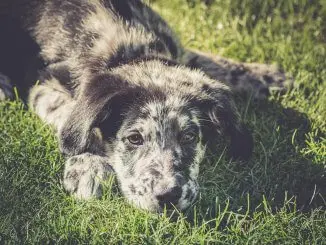
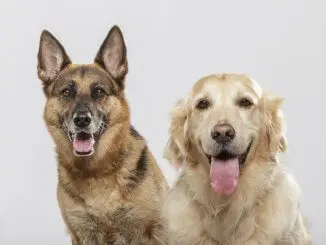

I have a lab/husky cross and he has all the traits you mentioned. He’s a beautiful dog, looks like a golden lab but has bright blue eyes. He’s always next to me wherever I go. Very loyal and as long as he has he regular exercise, he doesn’t chew and is pretty calm. Definitely recommend these dogs to anyone.
We just lost our 15 month old German Shepard to a tragic health issue and last year we lost our nine year old Alaskan malamute to an inverted stomach. I can’t lose any more dogs it makes my heart physically hurt no one should have to go through this especially our family who include our pets into and around everything that we do they are our family and we have one 21 year old son do you have any known reputable breeders ? We live in Northern New Jersey but are willing to travel 60+ miles to get him or her but I don’t know if I could handle another health abnormalities. My email is Lorirodriguez3@icloud.com and my cell number is +12014498483 thank You. Lori
We have a Lab Husky mix and while he is sweet he is a HANDFULL. Not for the faint of heart lol. He is closer to 75-80 lbs now at 4 years old. A labs friendliness with a husky’s stubbornness.
Looking for a lab husky german shephard mix
We just had a litter ,,,3/4 husky 1/4 shepard,,,,Black & white masking ,,,females
$400…..1 week old now .
We are on the NORTH SHORE ,,,MINNESOTA …WE JUST HAD A LITTER ,,,,3/4 HUSKY 1/4 GERMAN SHEPHERD,,,FEMALES ,,BLACK & WHITE MASKINGS ….1 WEEK OLD ….
We have a Beautiful Huskador Girl, 9 mos old and she weighs in at 52 lbs so far lol,and just started to actually shed for the first time. Parents are a full blood Black Lab Dad and Full Red Husky Mom. Super affectionate dog, loves to fetch, has learned many commands, loves water and loves people. Highly recommend this breed, but you absolutely need energy for them .
I’m looking for one of these pups myself. Banking on one that’s 4-6 months on the white/yellow side. I live in Louisiana. My number is 9203283208 text me if you have one